Beyond the Label: Understanding Purity Testing in Vapes
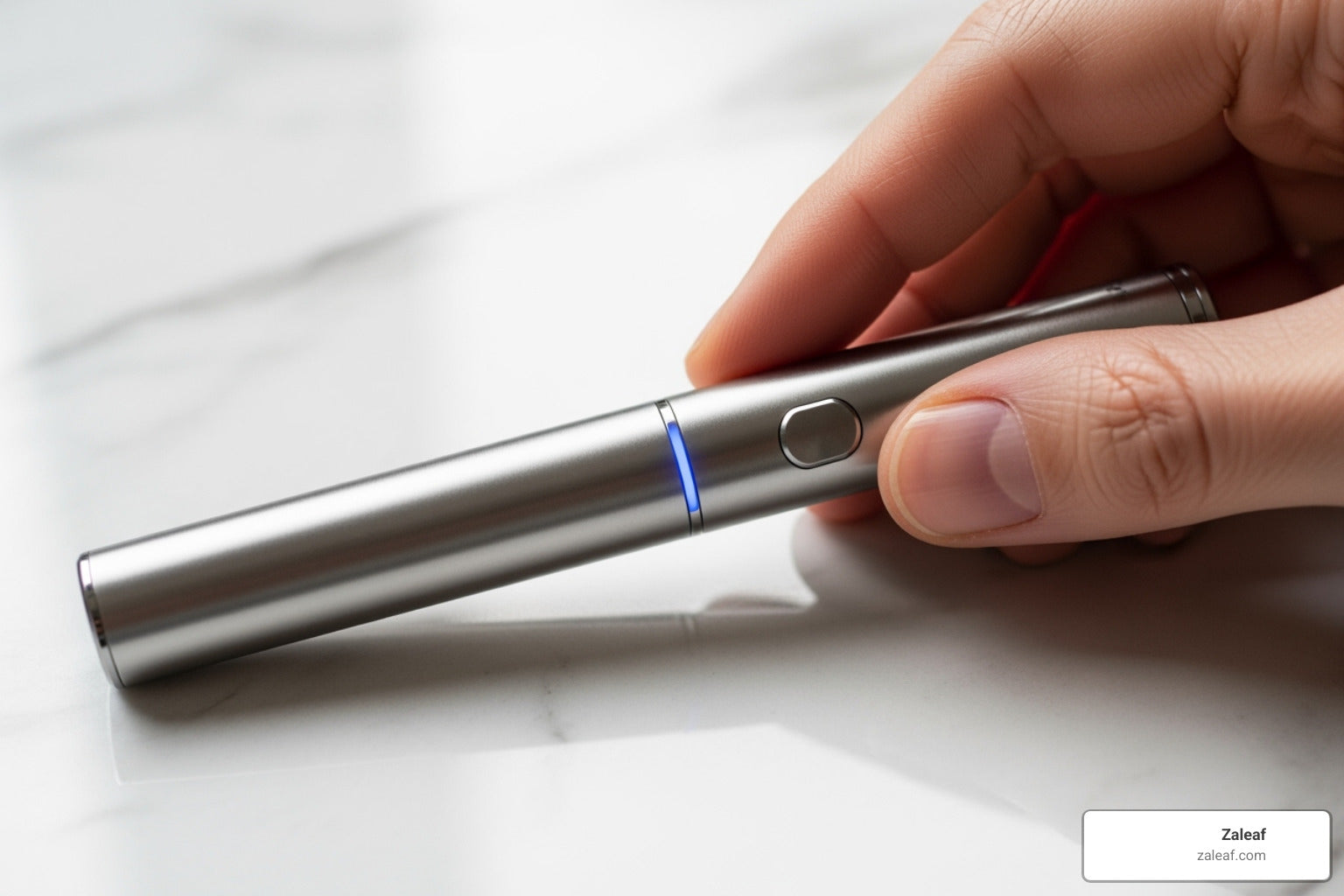
Why Understanding Purity Testing Is Essential for Vape Users
Products tested for purity undergo rigorous lab analysis to verify they contain only what's on the label and are free from harmful contaminants. Here's what purity testing reveals:
What Labs Test For:
- Heavy metals (arsenic, lead, mercury)
- Pesticides (up to 592 different chemicals)
- Residual solvents from extraction
- Biological contaminants (mold, bacteria, yeast)
- Mycotoxins (toxic compounds from fungi)
Key Testing Methods:
- High-Performance Liquid Chromatography (HPLC)
- Gas Chromatography-Mass Spectrometry (GC-MS)
- Atomic Spectrometry
When you see "tested for purity" on a vape product, it means independent labs have verified it meets safety standards. This differs from potency testing, which only measures THC or CBD content.
The vaping industry has exploded in popularity, but with that growth comes a critical question: what exactly are you inhaling? Since many vape products lack consistent regulatory oversight, third-party purity testing is your best defense against potentially dangerous contaminants.
I'm Max Shemesh from Zaleaf. Throughout my career building cannabinoid companies, I've seen why products must be tested for purity to ensure customer safety. Our focus on quality testing has helped Zaleaf achieve over 150% year-over-year growth while maintaining an 85% customer retention rate.
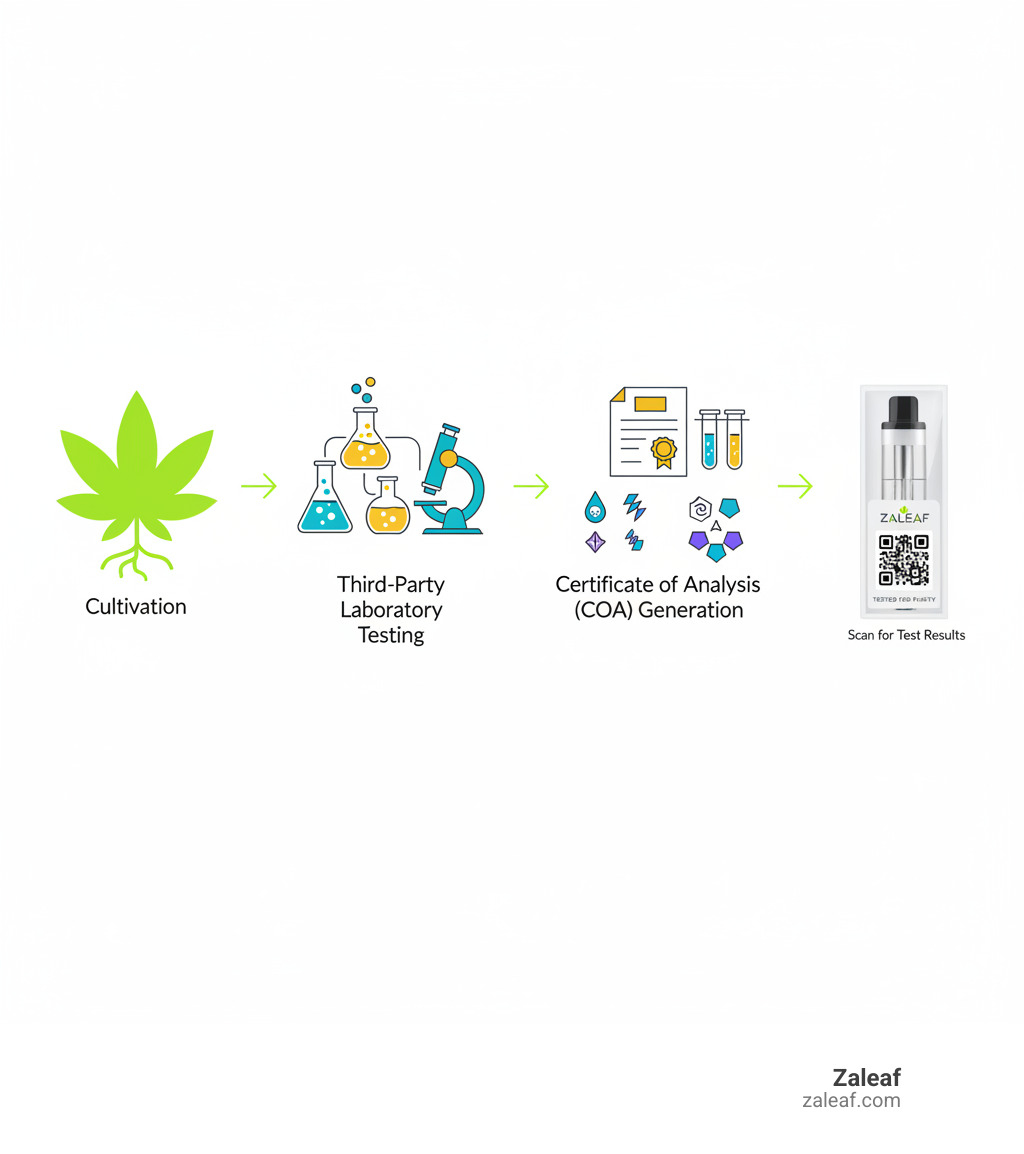
Purity vs. Potency: What's the Difference?
When shopping for vapes, you'll encounter two important terms: purity and potency. Understanding this difference is key to a safe and satisfying experience.
Potency is straightforward: it's the product's strength, meaning the concentration of active ingredients like THC or CBD. When a cartridge boasts "85% THC," that's a measure of potency.
At Zaleaf, we carefully craft our cannabinoid and terpene profiles to deliver specific mood effects. Potency helps us dial in the right strength for your desired experience, whether you want to feel energized, relaxed, or creative.
Purity, on the other hand, is about what shouldn't be in your vape. It measures the absence of contaminants and unwanted substances. A product that's been tested for purity has undergone analysis to confirm it's free from harmful extras.
The biggest misconception in the vape world is assuming that high potency automatically means a clean, safe product. This can be a dangerous assumption. For a deeper dive into why proper testing matters, check out our guide on The Ins and Outs of Third-Party Lab Testing.
Why High Potency Doesn't Equal Safety
Imagine a vape cartridge advertising "85% THC." It sounds impressive, but what's in the remaining 15%?
Without products being tested for purity, that leftover percentage could hide unwelcome guests like adulterants (substances added to bulk up the product cheaply), cutting agents (like the infamous Vitamin E acetate linked to lung injuries), and various fillers.
For example, a cartridge testing at 85% THC might contain residual solvents from extraction, heavy metals from cheap hardware, or pesticides from the original plant. This is why full-panel testing is so crucial. It's not enough to know your product is potent—you need to know it's clean, too.
At Zaleaf, we believe you should never have to guess what you're inhaling. Every product undergoes comprehensive third-party testing to verify both potency and purity. When it comes to your health, there's no such thing as being too careful.
How Vape Products Are Professionally Tested for Purity
Ensuring vape purity requires sophisticated scientific methods from unbiased experts in third-party laboratories. These independent facilities specialize in analytical testing, and their analysis is objective because they have no vested interest in the outcome. Reputable labs hold ISO/IEC 17025:2017 accreditation, an international standard for competence and impartiality. When a product is tested for purity by an ISO-accredited lab, you can trust the results.
Professional labs use advanced methods to scrutinize every aspect of a vape product. This is a stark contrast to at-home testing methods, which offer limited insights for complex products like vapes.
Here's a quick comparison:
| Feature | At-Home Reagent Tests | Professional Third-Party Lab Analysis |
|---|---|---|
| Purpose | Quick, qualitative identification or semi-quantitative purity indication for specific substances | Comprehensive, quantitative analysis of purity, potency, and contaminants |
| Method | Colorimetric reaction (chemical reagents) | Advanced analytical instruments (HPLC, GC-MS, etc.) |
| Accuracy/Reliability | Approximate, prone to user error, does not identify specific adulterants | High accuracy and precision, scientifically validated, identifies and quantifies specific compounds |
| Limitations | Does not identify specific cutting agents or contaminants; limited scope | Requires specialized equipment and expertise; can be costly and time-consuming |
| Results | Visual color change in seconds or minutes | Detailed Certificate of Analysis (COA) with precise numerical data, typically takes days |
| Regulatory Compliance | None | Adheres to strict ISO standards and state regulations |
While at-home tests might offer a preliminary idea of purity, they are no substitute for the precision and breadth of laboratory-based testing for vape products.
What Are Labs Testing For?
When Zaleaf products are tested for purity, we screen for a broad spectrum of potential impurities to ensure your safety.
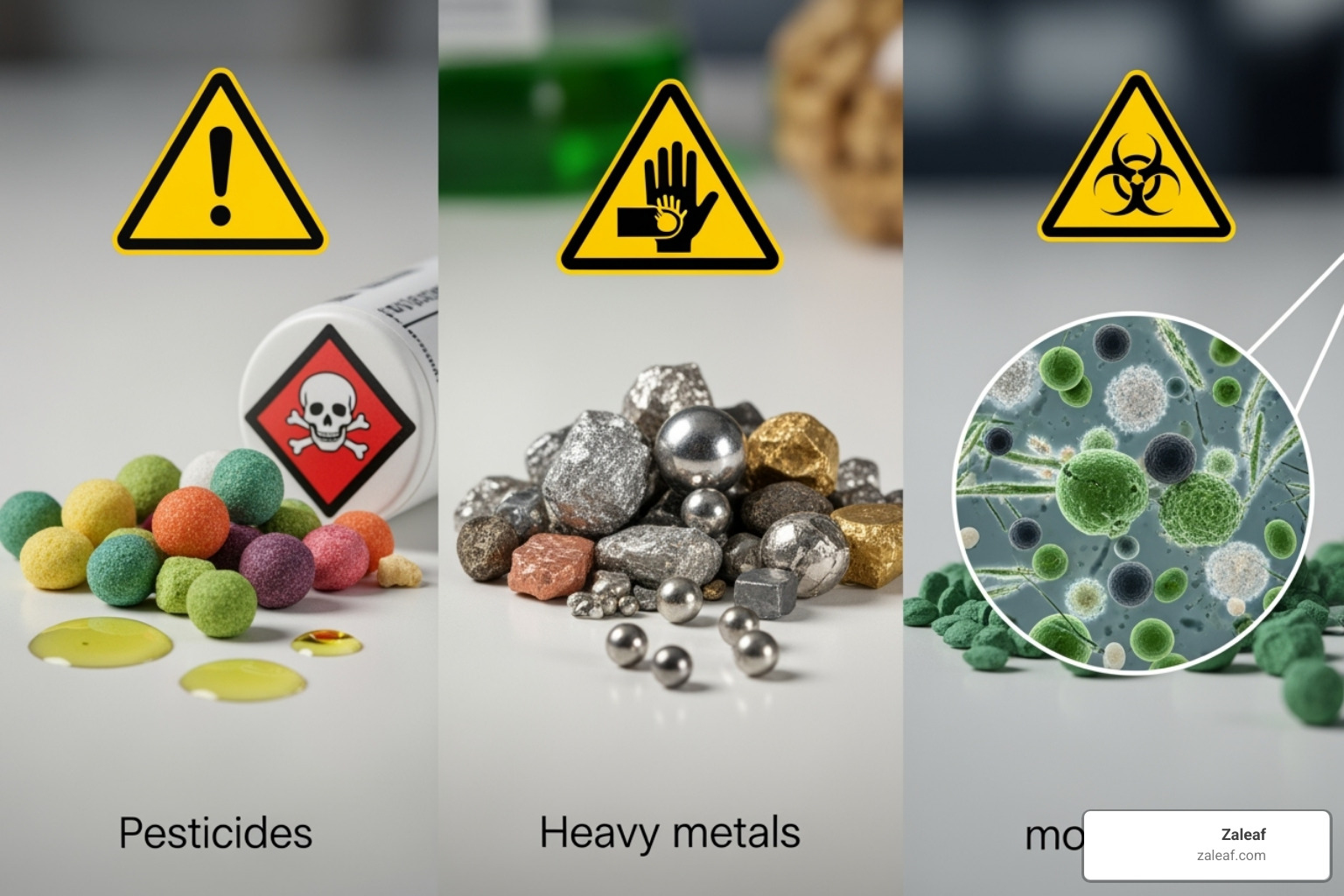
Here’s a breakdown of what reputable labs screen for:
- Heavy Metals: Elements like Arsenic, Lead, and Mercury can be absorbed by the plant or leach from hardware. Even trace amounts are toxic when inhaled.
- Pesticides: Harmful agricultural chemicals used during cultivation. Labs can screen for hundreds of pesticides, like the "592 Pesticides" panel, to ensure the product is clean.
- Residual Solvents: Chemicals like butane or ethanol used in extraction must be completely purged. Labs test to ensure they are below safe limits.
- Biological Impurities: Living contaminants like Mold, bacteria (E. coli, Salmonella), and yeasts can cause respiratory issues or infections.
- Mycotoxins: Toxic compounds produced by fungi (molds) that can remain even after the mold is gone and pose serious health risks.
What Analytical Methods Are Used?
Purity testing relies on cutting-edge analytical methods that can detect substances at incredibly low concentrations. These techniques are the backbone of reliable lab results.
Here are the primary methods labs use to ensure products are tested for purity:
- High-Performance Liquid Chromatography (HPLC): A technique to separate, identify, and quantify each component in a liquid. HPLC-UV is common for cannabinoid analysis, verifying active ingredients and the absence of unwanted compounds.
- Gas Chromatography-Mass Spectrometry (GC-MS): A workhorse for detecting volatile compounds. It's used for terpene profiling (identifying aromatic compounds) and screening for residual solvents.
- Atomic Spectrometry: This method detects and measures elemental impurities. Techniques like Inductively Coupled Plasma Mass Spectrometry (ICP-MS) are highly sensitive and can identify trace heavy metals like arsenic, lead, and mercury.
- Mass Spectrometry (MS): A versatile technique that identifies compounds by their "molecular fingerprint." It confirms the identity and purity of ingredients in botanical extracts. You can explore the science behind botanical analysis at this link.
These advanced techniques allow us to provide a product that has been carefully tested for purity and safety.
Decoding the Certificate of Analysis (COA)
The Certificate of Analysis (COA) is a powerful tool that puts you in control. It's a detailed report from an independent lab proving a product has been tested for purity and potency. Think of it as the product's official health record, confirming what's on the label is what's inside and that it's free from harmful contaminants. At Zaleaf, we provide a QR code on our packaging for instant access to the COA, a commitment to transparency we detail in our guide, Beyond the Label: Explaining Third-Party Testing.
Key Information to Look For on a COA
A COA might seem complex, but understanding its key sections is simple and empowers you to make informed choices.
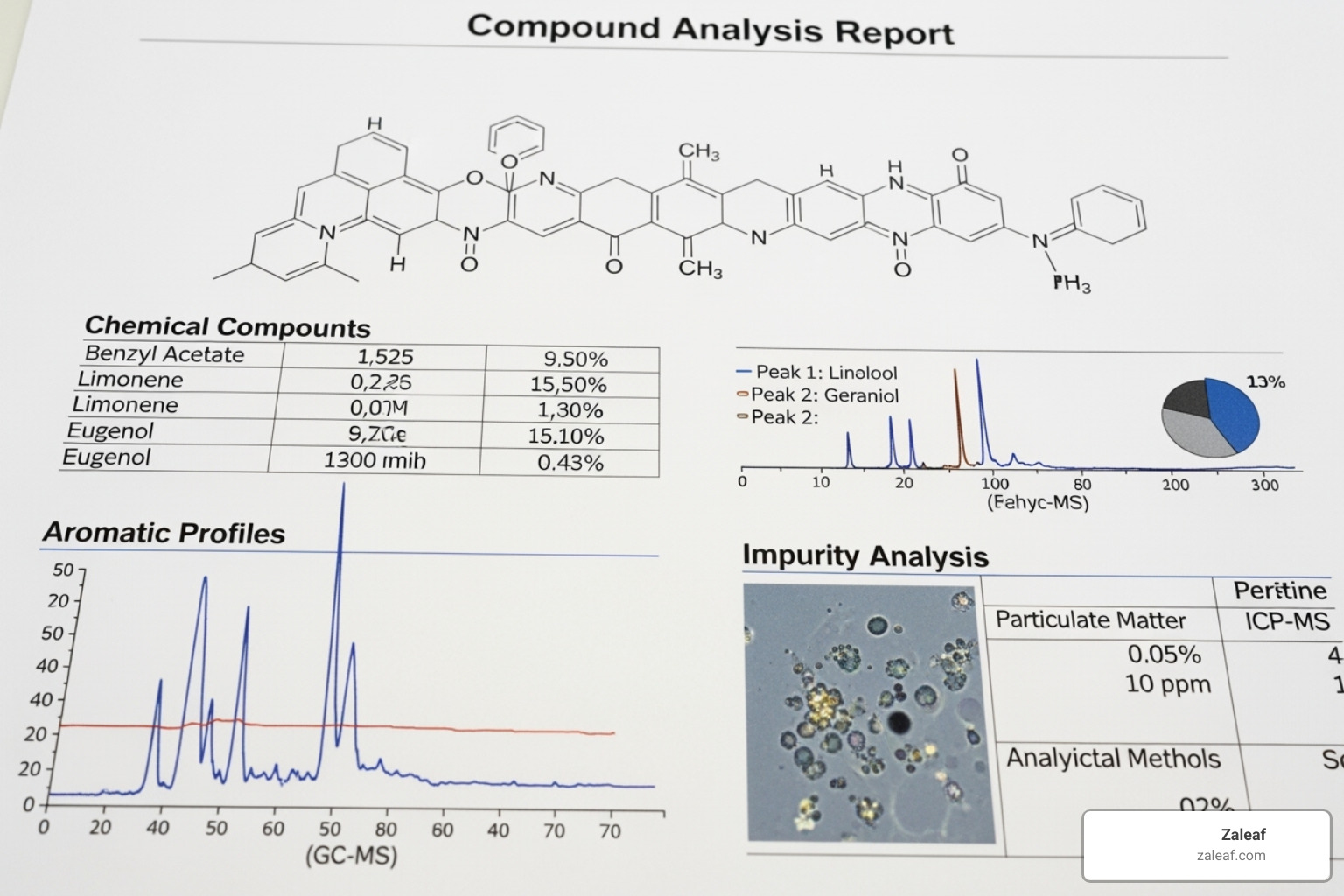
- Cannabinoid Profile: This potency section shows the exact amounts of cannabinoids like D9-THC and CBD, confirming the product's strength and legal compliance (e.g., under 0.3% Delta 9 THC).
- Terpene Profile: Terpenes create the unique scents, flavors, and "mood-specific effects" we focus on at Zaleaf. This section lists the types and amounts, indicating a rich, full-spectrum quality.
- Contaminant Analysis Results: This is where purity is proven. Look for "Passed" or "ND" (Not Detected) for pesticides, residual solvents, heavy metals, microbials, and mycotoxins.
- Lab Information & Batch Number: Check for the lab's name and its ISO/IEC 17025 accreditation. Cross-reference the batch number on the COA with your product's packaging to ensure the report matches what you're holding.
Understanding Lab Terminology
Don't be intimidated by scientific terms on a COA. Understanding these simple phrases will help you confirm your vape has been properly tested for purity.
- Limit of Detection (LOD): The smallest amount of a substance the lab's equipment can detect.
- Limit of Quantitation (LOQ): The smallest amount the lab can accurately measure. This is slightly higher than the LOD.
- Action Levels: State-mandated safety limits. If a contaminant is above its action level, the product fails testing. For example, specific rules like Florida's F.S. Rule 64ER20-39 guide these limits.
- ND (Not Detected): The best result. It means the substance was not found at or above the LOD.
- ppm/ppb (Parts Per Million/Billion): Units for tiny concentrations, used for contaminants like residual solvents (ppm) or pesticides (ppb).
- Water Activity (aW): Measures "free" water available for mold or bacteria to grow. A lower number means the product is more stable and safer.
By getting to know these terms, you can confidently read any COA and verify that your Zaleaf product has been rigorously tested for purity.
The Risks of Impurities and Why Third-Party Testing Matters
While vaping offers amazing flavors and convenience, it's crucial to ask: What exactly are we putting into our bodies? In a rapidly changing industry with inconsistent regulations, consumer diligence is key. Inhaling impure substances can lead to serious health problems. When a product hasn't been tested for purity, you're taking a gamble with your health—a risk you shouldn't have to take.
Health Dangers of Untested Products
The health risks of untested vapes are real. The EVALI lung injury outbreak, linked to Vitamin E acetate in illicit cartridges, was a major wake-up call for the importance of purity testing. But the dangers go beyond one incident. When products aren't tested for purity, you risk inhaling heavy metals or residual solvents that can become toxic when heated. Hidden additives can cause allergic reactions, while long-term exposure to trace amounts of pesticides or mold spores can lead to chronic respiratory issues or neurological problems. At Zaleaf, we view third-party testing as an essential shield against these invisible dangers.
How being 'tested for purity' builds trust
In an industry where trust can be scarce, being openly tested for purity is our core promise of safety and satisfaction. It means we subject our products to the toughest quality checks, building your confidence and showing we stand behind our products with scientific proof. This dedication also keeps us ahead of regulations, often exceeding current standards. When you see "tested for purity," it's more than a label—it's a badge of quality. It means we've invested in your safety so you can vape with confidence, knowing you're only inhaling a clean, potent product crafted for your mood.
Frequently Asked Questions about Vape Purity
Here are answers to common questions about what it means for vape products to be tested for purity.
How can I verify a product has been tested for purity?
The best way to verify a product has been tested for purity is to check its Certificate of Analysis (COA). At Zaleaf, we place a QR code on our packaging that links directly to the COA for that specific batch. On the report, look for the lab's name and its ISO/IEC 17025 accreditation. Finally, ensure the batch number on the COA matches the one on your product to confirm you're viewing the correct results.
What does it mean if a contaminant is "Not Detected" (ND)?
Seeing "ND" (Not Detected) on a COA is great news. It means that during rigorous testing, the lab's sensitive equipment did not find that specific substance at or above its detection limit. For you, it’s a clear signal that the product has been thoroughly tested for purity and is clean, delivering on our promise of a safe vape experience.
Are all third-party lab tests the same?
No, not all lab tests are equal. The gold standard for a testing facility is ISO/IEC 17025 accreditation. This international standard ensures the lab is competent, impartial, and provides reliable, unbiased results. At Zaleaf, we partner exclusively with these top-tier, accredited labs to ensure every product is tested for purity to the highest standard. Always look for this accreditation on a COA.
Conclusion: Vaping with Confidence
Understanding the difference between purity and potency is paramount. Potency is strength; purity is safety from harmful contaminants. This guide has hopefully empowered you to look "beyond the label" and read a Certificate of Analysis to make informed choices.
At Zaleaf, our commitment is to deliver an unparalleled experience with mood-specific cannabinoid and terpene profiles. But safety comes first. That's why every product undergoes rigorous 3rd party testing, ensuring it is tested for purity and potency. We offer 100% legal cannabis products with fast, discrete shipping and no ID or medical card required—just quality you can trust.
Choosing Zaleaf means choosing peace of mind, transparency, and quality. Vape with confidence, knowing our products meet the highest standards every time.
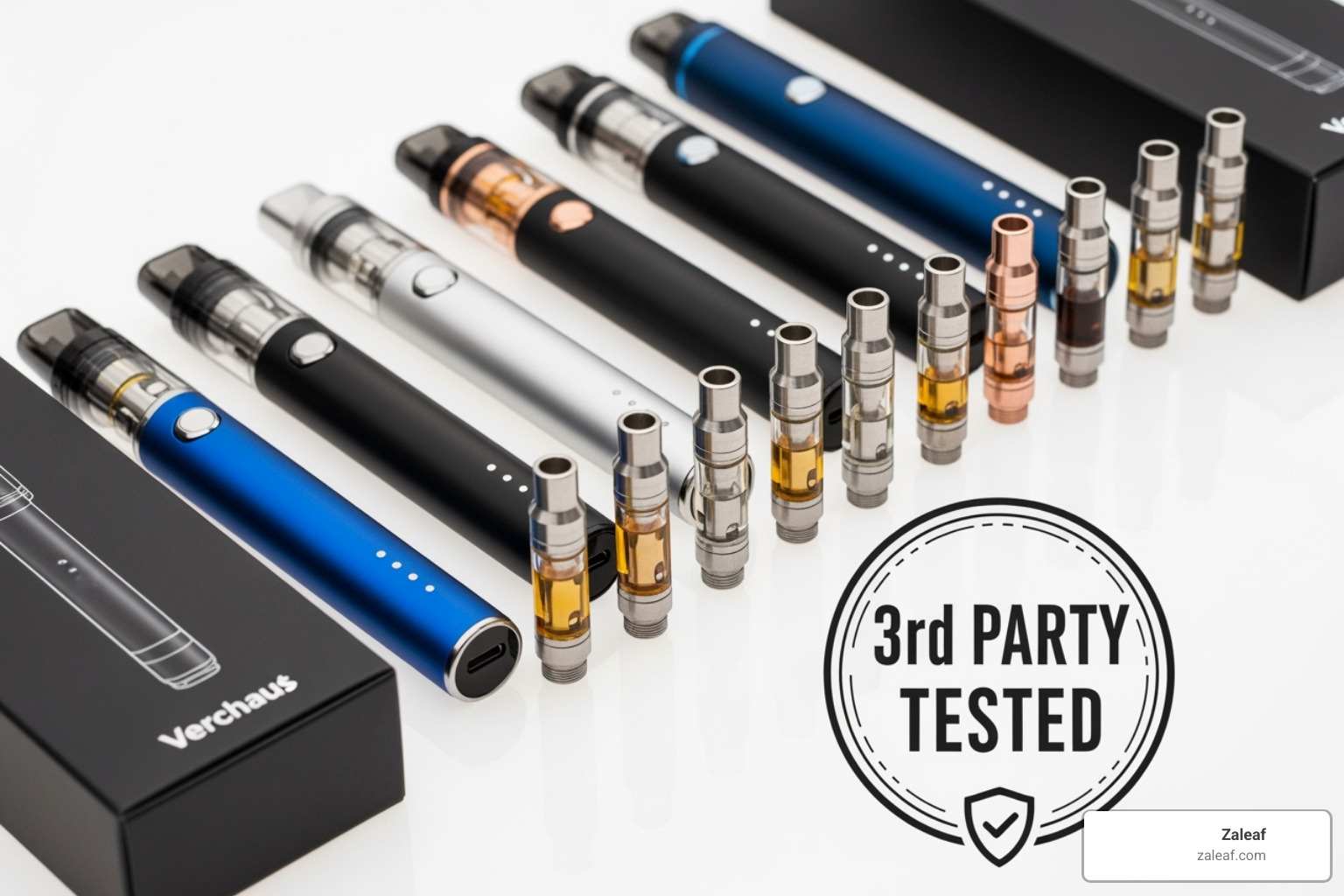
Ready to experience the Zaleaf difference? Order vapes online without ID and fly under the radar with our premium, third-party tested products.


